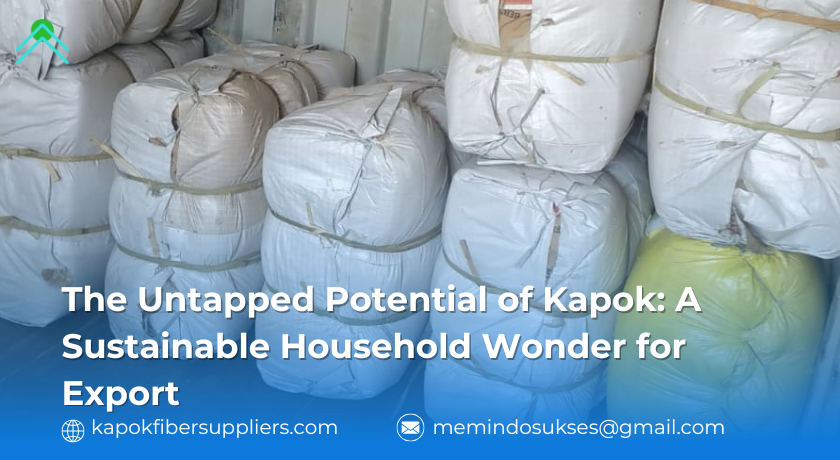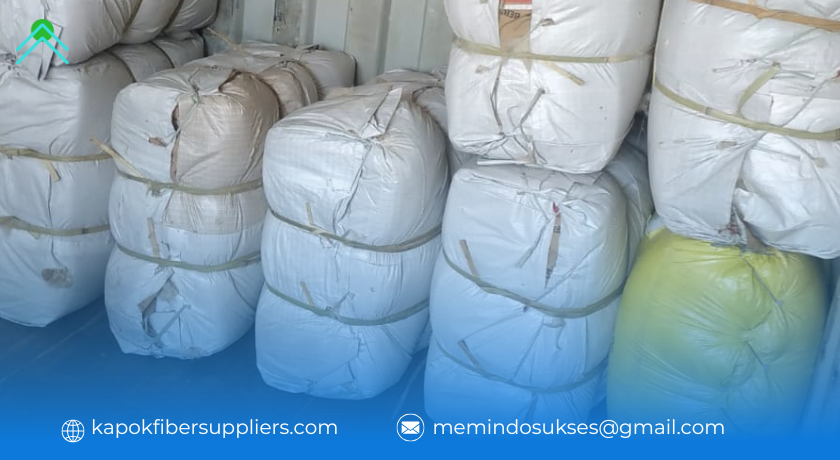
In recent years, sustainable and eco-friendly products have taken the spotlight in global markets. Among these, kapok—an often overlooked natural fiber—stands out as a versatile and eco-conscious material with remarkable potential. Derived from the kapok tree (Ceiba pentandra), which thrives in tropical regions, kapok has been used for centuries, especially in traditional applications like pillows and mattresses. However, its broader potential for modern household products is only now being realized, making it an ideal export commodity for international markets.
What Is Kapok?
Kapok is a natural fiber extracted from the seed pods of the kapok tree. This lightweight, soft, and fluffy material is often compared to cotton, though it has superior buoyancy, durability, and an impressive ability to retain its shape. The fibers are water-resistant, making them ideal for a wide range of applications. What truly sets kapok apart, however, is its sustainability—growing on trees that require minimal maintenance and leave behind a low environmental footprint.
Kapok: A Sustainable Solution for Household Goods
As the world continues to shift towards sustainability, kapok has gained recognition for its potential to replace synthetic materials in various household items. From mattresses to upholstery and bedding, kapok offers a natural, biodegradable alternative to petroleum-based products. The environmental benefits of using kapok for household goods are vast and compelling, making it an attractive choice for both manufacturers and consumers alike.
1. Eco-Friendly Bedding Products
Kapok is best known for its use in eco-friendly pillows, mattresses, and comforters. It serves as a hypoallergenic, lightweight, and breathable filling, providing a comfortable sleep experience while minimizing the use of harmful chemicals. Kapok pillows and mattresses are naturally resistant to dust mites and other allergens, making them an ideal choice for individuals with allergies or sensitivities. As more consumers seek out products that support their well-being and the environment, kapok presents a prime opportunity for exporters looking to meet this growing demand.
2. Upholstery with a Natural Touch
With its soft, cushion-like texture, kapok is increasingly being used in furniture upholstery. Sofas, armchairs, and cushions filled with kapok provide a natural alternative to synthetic foams, which often contain harmful chemicals and are non-biodegradable. Kapok’s natural elasticity ensures that it retains its shape over time, making it a durable and sustainable choice for long-lasting furniture. For exporters, this shift towards eco-friendly interior design products represents a lucrative opportunity to cater to environmentally conscious consumers in international markets.
3. Sustainable Insulation Materials
Kapok’s insulating properties are another reason it deserves attention. This natural fiber can be used as a sustainable alternative in insulation materials for homes, providing warmth and soundproofing. Unlike traditional synthetic insulation, which is often harmful to the environment and difficult to dispose of, kapok-based insulation is fully biodegradable and can be safely integrated into green building initiatives. With the global construction industry increasingly focused on sustainability, kapok insulation is poised to become an in-demand product for eco-conscious builders.
The Growing Global Demand for Eco-Conscious Products
There is an undeniable shift towards sustainability in consumer markets worldwide, driven by increasing awareness of environmental issues such as plastic pollution, deforestation, and climate change. As part of this movement, consumers and businesses are seeking out products that are not only functional but also eco-friendly. Kapok fits seamlessly into this trend, offering a natural, renewable alternative to synthetic materials that dominate many industries today.
Countries with a strong tradition of sustainable living, such as Scandinavian nations, Canada, and parts of Europe, are already seeing a surge in demand for natural fibers and eco-friendly home goods. In these regions, consumers are eager to invest in products that align with their values, and kapok presents an exciting opportunity for export businesses to tap into these markets.
Why Kapok Is a Smart Export Choice
- Sustainability is Key: The demand for sustainable, eco-friendly products is growing rapidly, and kapok fits perfectly into this global movement. Its minimal environmental impact, combined with its versatility, makes it an attractive option for consumers and manufacturers alike.
- Natural, Biodegradable, and Hypoallergenic: These attributes make kapok a superior choice for a range of household products, ensuring that businesses can meet the rising demand for safe, healthy, and environmentally responsible goods.
- Rising Market for Eco-Friendly Home Goods: As home goods consumers become more conscious of the environmental impact of their purchases, exporting kapok-based products offers businesses the chance to capitalize on a rapidly expanding market for eco-friendly solutions.
- Versatility: From bedding and upholstery to insulation and more, kapok has a broad range of applications that make it suitable for a variety of household products, increasing its potential for export in diverse industries.
The Future of Kapok in Global Markets
As global demand for sustainable products continues to rise, kapok has the potential to play a significant role in the future of household goods. Its natural, biodegradable qualities make it an attractive alternative to synthetic materials, and its versatility ensures that it can be used in an ever-expanding range of products.
For exporters, kapok presents an opportunity to meet the needs of eco-conscious consumers while tapping into a growing market for sustainable, high-quality household goods. With the right promotion and awareness, kapok could become a household name in green products, revolutionizing industries such as bedding, furniture, and construction along the way.
By focusing on the environmental benefits and expanding the range of kapok-based products, exporters can build a solid foundation for future growth and success in the global marketplace. The potential for kapok is vast, and now is the time for businesses to harness its power for a more sustainable future.

